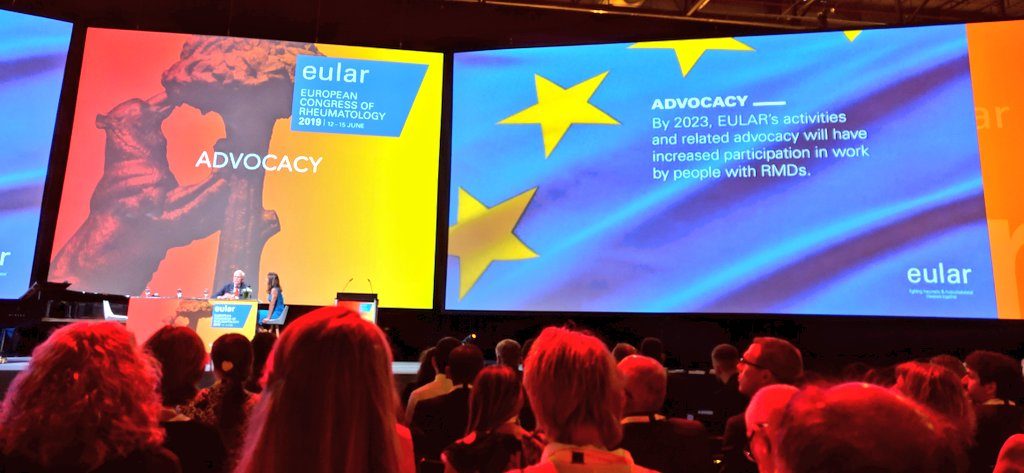
If you think of patients as naïve when seeking help and support, then you are seeing only one part of the picture. Increasingly in the past decade, patients are moving from being “users and choosers” to “makers and shapers”, thus challenging the classic caregiver paradigm. In the paternalistic model of medicine, health professionals appear like parents who impart the best treatment to patients without seeking their opinions in the process. However, owing to an increase in the literacy of patients and moral concerns of the patients’ “right to know”, progress is being made in recognizing the importance of patients’ values and experiences.
Patients live with their conditions every day and are the experts of them. This knowledge should be welcomed and valued throughout the process of care, as well as in the design and implementation of research studies by engaging patients in science. Patients with a scientific background, patients with chronic diseases that are experts of their condition, and those who have recovered from disease may be able to support others in dealing with their disease as well as researchers in the development and design of clinical studies. Knowing what patients want and how they want it is essential to improving the effectiveness of clinical research and consequent societal benefits.
Patients live with their conditions every day and are the experts of them.
What exactly is Patient and Public Involvement?
Patient and public involvement (PPI) is essentially the research being carried out by researchers alongside members of the public rather than to, about, or for them. Patients have acquired decision-making power through the change of the medical and social paradigm and becoming more active at the time of seeking information around therapeutic options.
Recent developments require investigators to involve the public as part of any prospective reseach and subsequently inform about study’s results. That is if they wish to successfully obtain research funding. Certain types of health research, such as participatory action studies with qualitative methods, mixed-methods studies, validation of questionnaires, Delphi studies, and development of clinical practice guidelines, actively encourage or necessitate patient involvement. On the other side, original research or literature reviews rarely involve patients.
In the era of social media and enhanced connectivity, patients are coming together and patients’ organizations are becoming a reality. This can facilitate support and understanding or, importantly recognize the feelings of being a person suffering from a disease. Patients’ organizations recognize the willingness of patients with a severe chronic condition, such as osteoarthritis, to be involved in public health programs, clinical research, and trials. These partners continuously seek information to be up to date on everything related to their daily life struggles: the disease and its symptoms.
How can publishers advance public engagement?
What science is doing for me? Or How can I contribute with my insights? are two frequent questions in the mind of patients. Still, answering this can be complex as verifying scientific data and accessing the latest publications is challenging for most lay people. Science does not often speak a patient-friendly language, and partner organizations are working to bridge the gap between patients and the scientific community by being the translators between these two worlds. The publishing community has started to recognize its responsibility in delivering and facilitating access to its discoveries to patients and the general public. In this context, journals can play a key role in reducing scientific language barriers by allowing patients and the public to contribute and author publishable “Patients perspectives”.
Patient and public involvement (PPI) is essentially the research being carried out by researchers alongside members of the public rather than to, about, or for them.
Several other strategies could be implemented in peer-review journals to welcome patients on board during the publication process and ensure patient-friendly access to information. Some examples could include inviting published authors to write a lay summary of their work (in one or more languages), a patient information note, and/or depict an infographic to make it easily accessible to the general public. These can provide practical advice for patients based on the available evidence for the screening, assessment, and management of specific diseases.
Also, submission guidelines could be implemented to help discern the studies complying with PPI guidelines, such as mandating the inclusion of the GRIPP-2 checklist. This requirement would help to understand how the participation of patients would improve these studies’ results compared to those studies without their involvement.

The new normal
Innovations like creating and training a pool of engaged patient reviewers to better understand their points of view and needs for submitted manuscripts which were hard to imagine a decade ago, could represent a revolution for the patients and the scientific community. Scientific articles presenting studies designed and conducted by patients to support patients are already a reality. In the last two years, the Osteoarthritis Patients Task Force which includes this blog’s author, a global alliance of patient organizations fighting against osteoarthritis, led by the Osteoarthritis Foundation International (OAFI) and the Arthritis Foundation, published in BMC Musculoskeletal Disorders the results of a systematic review and a global survey analyzing patients with osteoarthritis’ perceptions of quality of life and associated factors. Both contribute in raising awareness of patients’ conditions and perspectives in a rheumatic and musculoskeletal disorders.
We have entered an era of patient centricity, perspective, independence and auto-responsibility. There is still a long road ahead to go but we have already walked the first steps on it. If patients’ organizations and the editorial board of international journals join their efforts to give the perspectives of patients more visibility, then groundbreaking transformations can happen in health research.

Comments